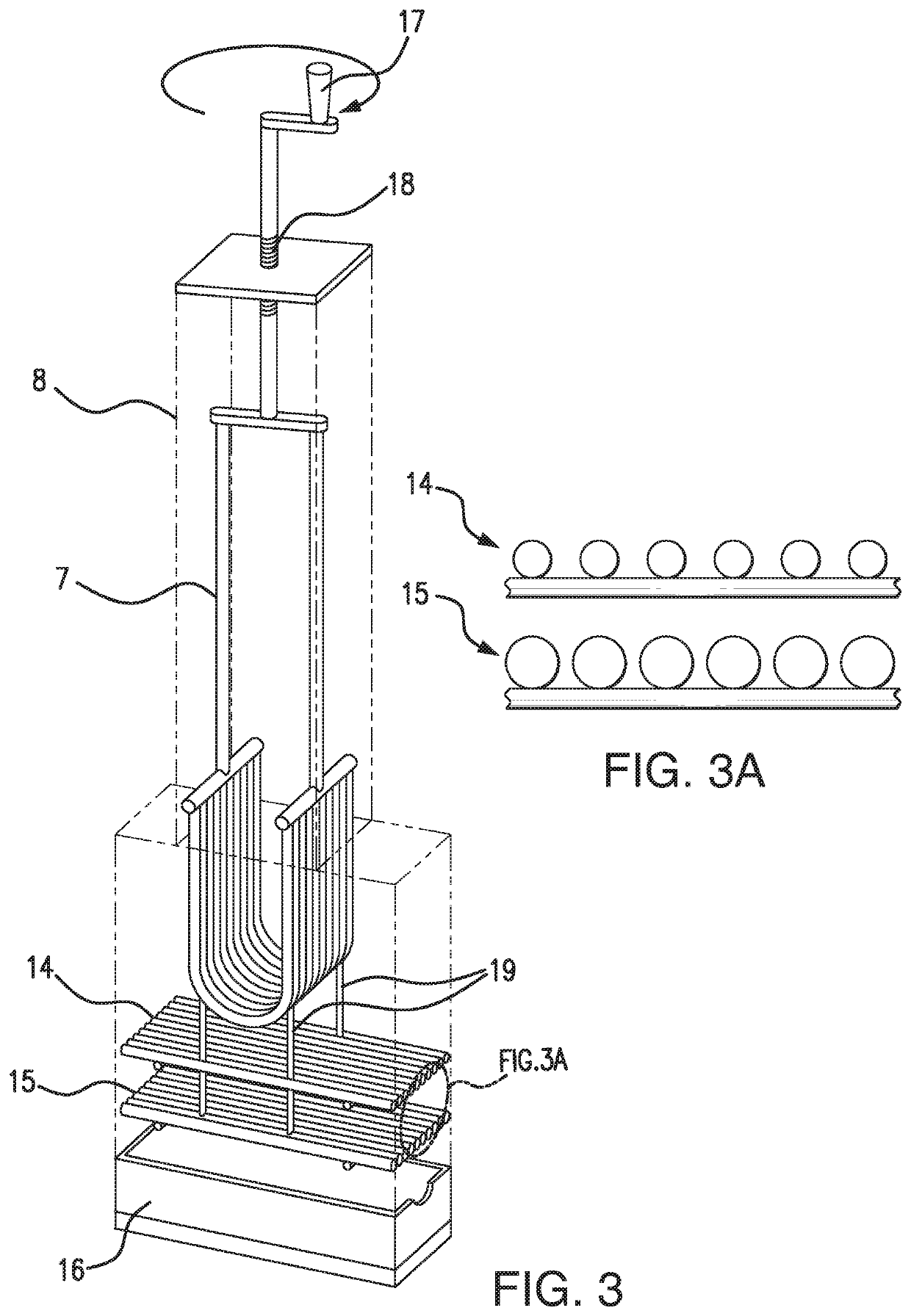Pellet stove
a pellet stove and pellet technology, applied in the field of pellet stoves, can solve the problems of pellets smoldering and smoke, pellets may eventually be extinguished, temperature drop, etc., and achieve the effects of reducing pollutants, improving the efficiency of pellet stoves, and controlling the burn rate of pellets
- Summary
- Abstract
- Description
- Claims
- Application Information
AI Technical Summary
Benefits of technology
Problems solved by technology
Method used
Image
Examples
first embodiment
[0086]The pellet stove includes exhaust or heat tube 27, and air deflectors 28 positioned along segments of the heat tube. The heat tube terminates at chimney connector 29, which connects to a chimney (not shown) or other means for disposing of exhaust gas. Support leg 30 for the burn chamber includes an air inlet 31, similar to that of the Basket adjuster 32 controls the position of the basket, in a manner to be described later.
[0087]In the embodiment of FIGS. 4-7, the top section 33 of the heat tube is horizontal, i.e. parallel to the floor, and not at an angle, as was the case in the first embodiment. This feature allows the operator to use this flat area to heat coffee, water, and food. A heat shield can be provided along the top section 33, and such heat shield could be hinged, allowing it to be in place, close to the top section 33, during normal use, and to be swung upward and out of the way when the top section is being used for heating food and the like.
[0088]The exploded ...
second embodiment
[0095]FIGS. 5 and 6 illustrate the control of the position of the basket in the Basket 36 is attached to control arm 47. The control arm is engaged by threaded portion 48 connected to basket adjuster 32. The adjuster 32 is turned as indicated by arrow 49 in FIG. 6. Turning the adjuster 32 thereby causes the basket to rotate, in either of the directions indicated by arrow 50. The positions shown in FIGS. 5 and 6 show the extreme positions of the basket. In the position shown in FIG. 5, the basket has been rotated such that it has been moved generally farther from the floor. When the basket is raised up in this position, fewer pellets are allowed in the basket for a lower temperature burn. In the position shown in FIG. 6, the contents of the basket are closer to the floor. When the basket is lowered in this position, more pellets are allowed in the basket for a higher temperature burn. Thus, the movements of the basket, shown in FIGS. 5 and 6, change the amount of pellets allowed in ...
PUM
 Login to View More
Login to View More Abstract
Description
Claims
Application Information
 Login to View More
Login to View More - R&D
- Intellectual Property
- Life Sciences
- Materials
- Tech Scout
- Unparalleled Data Quality
- Higher Quality Content
- 60% Fewer Hallucinations
Browse by: Latest US Patents, China's latest patents, Technical Efficacy Thesaurus, Application Domain, Technology Topic, Popular Technical Reports.
© 2025 PatSnap. All rights reserved.Legal|Privacy policy|Modern Slavery Act Transparency Statement|Sitemap|About US| Contact US: help@patsnap.com



